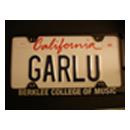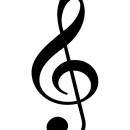Y para más adelante, la eq que da el color que la clientela quire ver (lel de las bragas de Eve Anna)
Problema en el nivel de salida al masterizar

OFERTAS Ver todas
-
-5%Kawai ES-60
-
-29%UA Apollo x6 Gen2 Essentials+
-
-30%Behringer X32 Producer


prosodio escribió:Jajajaj, sera cabrito el Carmelo.... DW, al final te veines a la liga de Mytek no? jejeje Yo tambien tengo ya decidio el 8x192 pero no lo veo mucho de segunda por ahi, el DA dicen que es de lo mejorcito. La Gyraf tb está decidida y el G10 Varimu también... A ver si en febrero tengo to puesto....
Besos!!!
Pues creo que me paso a Mytek, si, aunque el Lavry Black que tengo actualmente lo voy a manetener porque es una maravilla de cara al monitoraje, pero a la hora de pasar la señal por el outboard y devolverla al DAW el Mytek da un resultado excelente, la señal obtenida es muy fiel a la original y mantiene mejor el cuerpo (entiéndase frecuencias graves) que ese Lavry Blue que tan empeñado estaba en pillarme.
Un beso para ti también.
P.D
Ya hablaremos.


carmeloc escribió:Me ha contestado Ted Fletcher y me ha mandado una review que le hicieron en el 2007 del modelo anterior, el P-38 en la revista Musictech Magazine en agosto del 2006. No se si se pueden adjuntar aquí pdf.
Pues creo que si que se podía, vamos...tu prueba, ya que el hilo ha desvariado hasta este punto, una review del TF-Pro sería un gran aporte.
Un saludo.

carmeloc escribió:Lo de la Gyraf se lo debo a él, que me me mandó las pruebas: aluciné...ya no frecuenta estas páginas, debe ser porque está sentando la cabeza y tiene una novia nueva muy guapa (ya no está para perder el tiempo..., el ex soltero de oro)
Vamos, sólo le falta la corona y nombrarle Santo... :p
Carmelo, yo no creería tan firmemente en ese nombramiento de "el ex soltero de oro".
Perdón por el off topic, a la materia: mi voto por los Gyraf tb. Suenan del copetín.
Un abrazo gente,
Garlu.

D.W escribió:carmeloc escribió:Me ha contestado Ted Fletcher y me ha mandado una review que le hicieron en el 2007 del modelo anterior, el P-38 en la revista Musictech Magazine en agosto del 2006. No se si se pueden adjuntar aquí pdf.
Pues creo que si que se podía, vamos...tu prueba, ya que el hilo ha desvariado hasta este punto, una review del TF-Pro sería un gran aporte.
Un saludo.
No creo que sea un problema horrible revitalizar un hilo en el que se convoca a varios de los que lo habían dejado hacía meses y en el que se citaba el P-38; el problema lo tengo en que no se cómo subir un pdf aquí, ¿quízás reconvirtíendolo a JPG?.

Garlu escribió:carmeloc escribió:Lo de la Gyraf se lo debo a él, que me me mandó las pruebas: aluciné...ya no frecuenta estas páginas, debe ser porque está sentando la cabeza y tiene una novia nueva muy guapa (ya no está para perder el tiempo..., el ex soltero de oro)
Vamos, sólo le falta la corona y nombrarle Santo... :p
Carmelo, yo no creería tan firmemente en ese nombramiento de "el ex soltero de oro".
Perdón por el off topic, a la materia: mi voto por los Gyraf tb. Suenan del copetín.
Un abrazo gente,
Garlu.
Princesa de la ribera (del río Mystic)

carmeloc escribió:No creo que sea un problema horrible revitalizar un hilo en el que se convoca a varios de los que lo habían dejado hacía meses y en el que se citaba el P-38; el problema lo tengo en que no se cómo subir un pdf aquí, ¿quízás reconvirtíendolo a JPG?.
Tienes razón, teniendo en cuenta que esto es el foro de Samplitude y Sequoia el hilo ya se había desviado un poquito antes de tu aparición, pero bendita desviación.
Para subir un pdf pulsa primero el botón de "Responder" y después "Subir adjunto", la gente no podrá verlo directamente aquí, tendrán que descargarlo y leerlo cuando ellos quieran.
Un saludo.


Le explicaba a Teddy (not the bear) ayer que, vale, que apreciaba sus 40 años (me decía el legendario ingeniero) de experiencia; pero que se tirase el pisto y cantase cifras
"Thanks, Mr.Ted, for your quick answer. It's OK about your reasons for not publishing technical specs and your faith in your devices (me myself I´m the result of 51 years of a design between my mother and my father, fail design...in my case); but I need to know, for example, the maximum I/O level, the distortion and the output noise in a common situation.
Sincersly best regards,
Carmel O´Pecign, correspondent in Madrid of the I.S.A.L.O.S.(Irish / Spanish Annoying Legends of Sound) NGO."
"Thanks, Mr.Ted, for your quick answer. It's OK about your reasons for not publishing technical specs and your faith in your devices (me myself I´m the result of 51 years of a design between my mother and my father, fail design...in my case); but I need to know, for example, the maximum I/O level, the distortion and the output noise in a common situation.
Sincersly best regards,
Carmel O´Pecign, correspondent in Madrid of the I.S.A.L.O.S.(Irish / Spanish Annoying Legends of Sound) NGO."

El viejo Ted, llamándome carmel (como mis amigas, menos Vanesa que me llama por mi nombre, pues es una señorita), me manda estas interesantes cifras:
No me parecen nada malas, la verdad...
(Y toda una declaración de principios fletcherianos, por cierto)
"Hi Carmel, Maximum input level is actually infinite... the input stage will handle levels as high as +30dBu because of the radical design of the transformer input stage.
Distortion is a relative parameter..... 1% distortion can be acceptable as long as it is 2nd order distortion, in fact virtually all loudspeakers have distortion at this sort of level, however, 0.05% distortion can be very disturbing if it is 3rd or 5th harmonic distortion. The actual distortion of the P38 series compressor is below 0.01% second order and below 0.002% 3rd order at normal operating level (typically 0.0006%). The distortion under compression is pure 2nd order and increases as a function of attack and release times; it is typically within 0.1% at lower frequencies... that is normal and the result of the physics of compression. Note, most other compressors, including all VCA compressors show signs of 3rd order distortion and so sound bad.
Maximum output level is +22dBu.
But there are very much more important parameters for a compressor; it must respond cleanly and accurately to transient overloads, not clipping them off, and certainly not over-compressing. This is where there is a big advantage with this design.
Regarding noise, there are no high-gain stages in the compressor, so the absolute noise level remains very low at about -90dBu.
To be highly technical, the input stage is transformer balanced operating in pure current mode, this gives extreme overload margin and theoretically zero distortion. The sidechain is an asymmetric peak and average rectifier with high and low-pass filters to correct for low frequency over-compression, and to enable transients to pass through without distortion.
The compression stage is an optical attenuator operating in one leg of a wien bridge circuit. activation is by LED driven from a servo circuit. The wien bridge allows very high amounts of compression and a wide ratio range, from about 1.2:1, up to 100:1 plus (pure limit).
The output stage uses several integrated circuit blocks operating in parallel, this gives a consistent low impedance output that is unaffected by cable length or any other impedance loading.
kind regards
Ted Fletcher
TFPRO(R)
The Sound House
Hunsdon Road
Torquay TQ1 1QB"
No me parecen nada malas, la verdad...
(Y toda una declaración de principios fletcherianos, por cierto)
"Hi Carmel, Maximum input level is actually infinite... the input stage will handle levels as high as +30dBu because of the radical design of the transformer input stage.
Distortion is a relative parameter..... 1% distortion can be acceptable as long as it is 2nd order distortion, in fact virtually all loudspeakers have distortion at this sort of level, however, 0.05% distortion can be very disturbing if it is 3rd or 5th harmonic distortion. The actual distortion of the P38 series compressor is below 0.01% second order and below 0.002% 3rd order at normal operating level (typically 0.0006%). The distortion under compression is pure 2nd order and increases as a function of attack and release times; it is typically within 0.1% at lower frequencies... that is normal and the result of the physics of compression. Note, most other compressors, including all VCA compressors show signs of 3rd order distortion and so sound bad.
Maximum output level is +22dBu.
But there are very much more important parameters for a compressor; it must respond cleanly and accurately to transient overloads, not clipping them off, and certainly not over-compressing. This is where there is a big advantage with this design.
Regarding noise, there are no high-gain stages in the compressor, so the absolute noise level remains very low at about -90dBu.
To be highly technical, the input stage is transformer balanced operating in pure current mode, this gives extreme overload margin and theoretically zero distortion. The sidechain is an asymmetric peak and average rectifier with high and low-pass filters to correct for low frequency over-compression, and to enable transients to pass through without distortion.
The compression stage is an optical attenuator operating in one leg of a wien bridge circuit. activation is by LED driven from a servo circuit. The wien bridge allows very high amounts of compression and a wide ratio range, from about 1.2:1, up to 100:1 plus (pure limit).
The output stage uses several integrated circuit blocks operating in parallel, this gives a consistent low impedance output that is unaffected by cable length or any other impedance loading.
kind regards
Ted Fletcher
TFPRO(R)
The Sound House
Hunsdon Road
Torquay TQ1 1QB"


Nuevo post
Regístrate o identifícate para poder postear en este hilo





